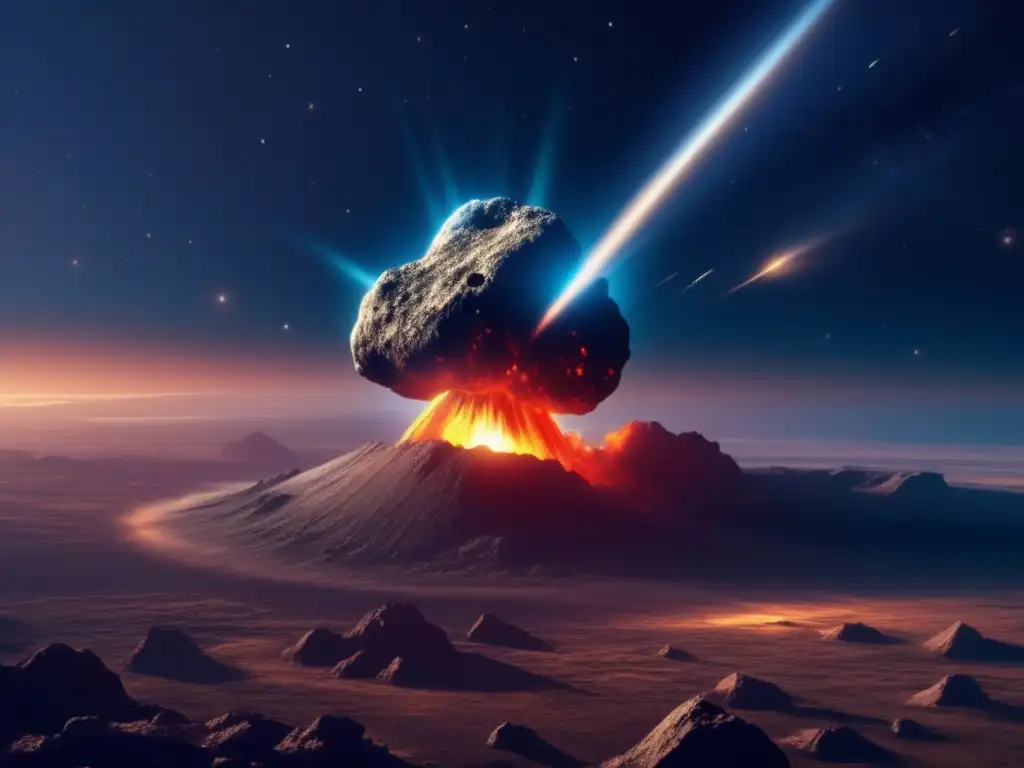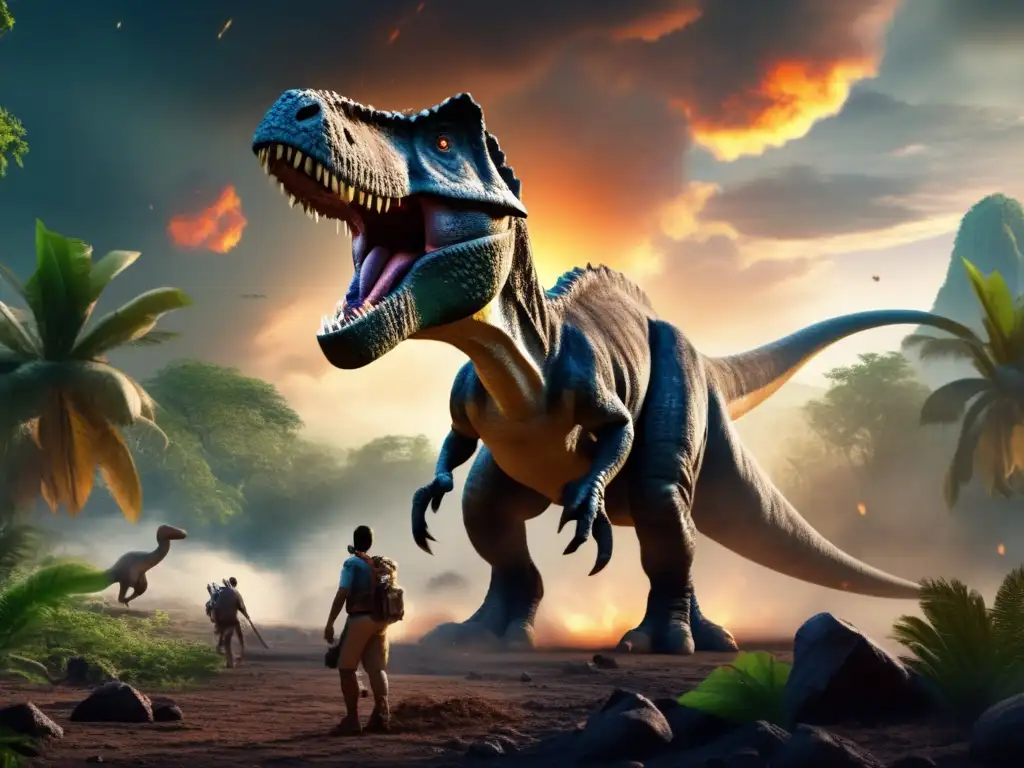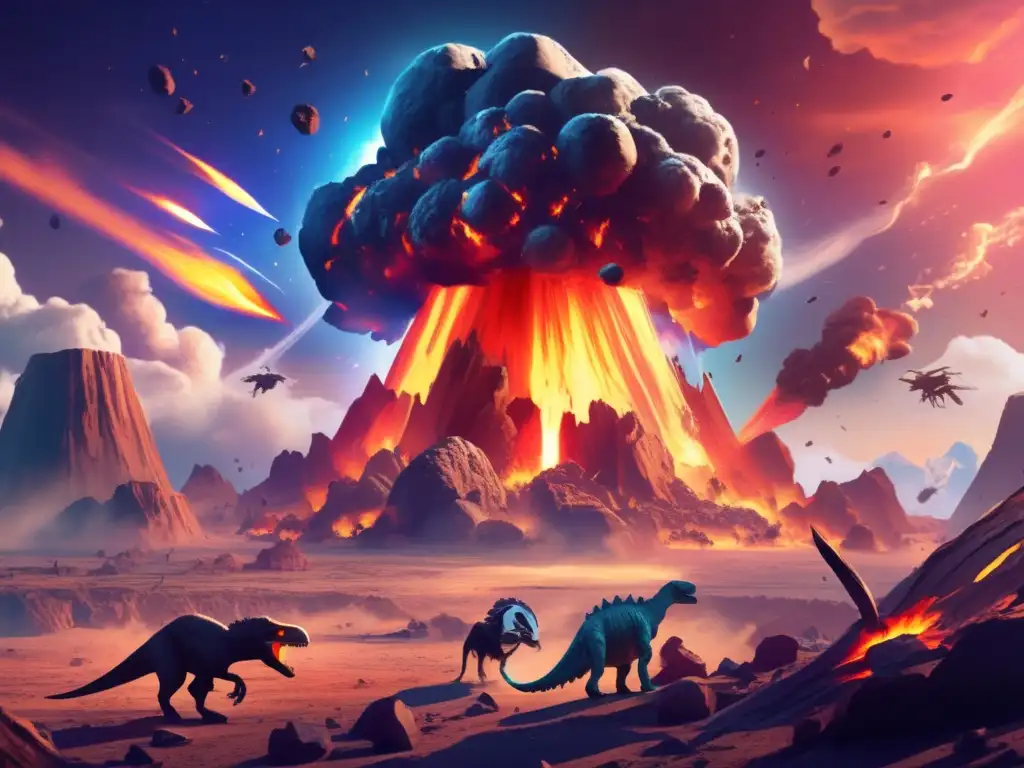Closing The Age Of Dinosaurs: The Asteroid Theory

Introduction
The theory that an asteroid impact was responsible for the extinction of the dinosaurs is one of the most widely accepted explanations for this pivotal moment in natural history. While many factors, including volcanic activity and climate change, may have contributed to the demise of the dinosaurs, the asteroid theory points to a single catastrophic event as the key trigger for this mass extinction. In this article, we delve into the details of this theory and explore other fascinating aspects of asteroid impacts.
What is the Asteroid Theory?

The Discovery of the Iridium Anomaly
The evidence for the asteroid theory began with a discovery made by scientists in the 1980s. A layer of sedimentary rock found at the boundary between the Cretaceous and Paleogene periods (about 66 million years ago) contained a high concentration of iridium, a rare metal not commonly found on Earth's surface. This iridium anomaly suggested that a massive object from outer space had collided with the planet, leaving behind a clear marker of its impact.
The Chicxulub Crater
In 1990, scientists discovered a massive crater buried beneath the Yucatan Peninsula in Mexico. Measuring roughly 180 kilometers in diameter, this crater was identified as the result of an impact event that could have produced the global extinctions seen at the time. The age of the Chicxulub structure is in close agreement with the mass extinction event, leading scientists to conclude that this may have been the impact site of the asteroid that extinguished the dinosaurs.
The Aftermath of the Impact
The asteroid impact would have created a catastrophic release of energy with devastating effects on the environment. The massive blast wave would have triggered wildfires across the planet, while intense heat and searing winds would have caused widespread destruction. The impact also launched large amounts of dust and debris into the atmosphere, leading to a global cooling effect and blocking out sunlight, which could have significantly disrupted the food chain and led to the mass extinction of many species, including the dinosaurs.
The Threat of Asteroid Impacts

Global Preparedness
The risk of another asteroid impact is real, and efforts are underway to track all known asteroids and comets that might pose a threat. Scientists around the world are working together to develop plans for early warning systems and mitigation strategies that can minimize the impact of a potential strike. This includes everything from deflecting incoming asteroids, to evacuating vulnerable areas, to developing new technologies that can detect and track asteroids more accurately.
The Chelyabinsk Meteor
On February 15, 2013, a meteor exploded over the Russian city of Chelyabinsk, releasing a shock wave that injured over 1,500 people and caused extensive property damage. While this event was not a direct hit, it was a wake-up call for scientists and policymakers around the world, highlighting the need for increased vigilance and readiness in the face of potential asteroid impacts.
The DART Mission
The Double Asteroid Redirection Test (DART) mission, launched by NASA in November 2021, aims to demonstrate the effectiveness of kinetic impactor technology in deflecting a potentially hazardous asteroid. The mission involves targeting an asteroid moonlet called Dimorphos, which orbits a larger asteroid, and slamming the spacecraft into it at high speed. Scientists will measure the impact and determine whether it successfully changes the moonlet's orbit, which could pave the way for more effective asteroid deflection strategies in the future.
What Happens When Asteroids Enter Earth's Atmosphere?

Fireballs and Explosions
When an asteroid enters Earth's atmosphere, friction causes it to heat up and produce a bright fireball visible from the ground. If the asteroid is large enough, it may explode before reaching the surface, creating a powerful shock wave that can shatter windows and cause damage to buildings. Thankfully, most asteroids burn up in the atmosphere before they ever reach the ground, making these events relatively rare.
Impact Craters
If an asteroid does manage to collide with Earth, it will create a crater at the point of impact. The size and shape of the crater will depend on factors such as the size and speed of the asteroid, the nature of the terrain, and the angle of impact. Impact craters are found all over Earth and can provide valuable information about the history of our planet and its interactions with other celestial bodies.
The Tunguska Event
One of the most famous asteroid impact events occurred in Siberia in 1908, when a mysterious explosion flattened trees across a wide area of forest. Known as the Tunguska event, this blast is thought to have been caused by a small asteroid or comet that exploded in the atmosphere before impacting the ground. The blast wave was powerful enough to knock people off their feet dozens of kilometers away and is estimated to have been equivalent to several megatons of TNT, making it one of the most powerful explosions ever recorded in human history.
Frequently Asked Questions

-
What is the likelihood of another asteroid impact in the near future?
The risk of an asteroid impact is real, but the chances of a major strike in the near future are relatively low. Scientists and policymakers around the world are working to prepare for the possibility of impact events and develop strategies for mitigation and prevention.
-
How can we protect ourselves from potential asteroid impacts?
Early warning systems and evacuation protocols can help minimize the damage from a potential asteroid impact. Technology is also being developed to deflect incoming asteroids and comets, although this is still an area of ongoing research and experimentation.
-
What lessons can be learned from the extinction of the dinosaurs?
The extinction of the dinosaurs serves as a reminder that even a single catastrophic event can have a profound impact on the planet and its inhabitants. It underscores the importance of environmental stewardship and preparedness for potential threats to our ecosystem.
-
How do scientists track incoming asteroids?
Scientists use a variety of methods to track incoming asteroids, including ground-based telescopes, radar, and space-based observatories. Sophisticated algorithms are used to predict the trajectory of these objects and determine whether they pose a threat to Earth.
-
What happens if we can't deflect an asteroid in time?
If an incoming asteroid cannot be deflected or redirected, then an impact event is likely to occur. The consequences of such an event could be catastrophic, potentially causing widespread damage and loss of life.
Conclusion
The asteroid theory provides a stark reminder of the tremendous forces at work in the universe and the impact they can have on our planet. While the extinction of the dinosaurs remains a source of fascination and mystery, it also underscores the importance of preparedness and vigilance in the face of potential threats to our ecosystem. As we continue to explore the cosmos and study the mysteries of the universe, we must remain mindful of the potential risks and work together to protect our planet and its inhabitants.
Thanks for reading! We encourage you to share your thoughts and questions in the comments section below. For more information on asteroids and related topics, check out our additional resources section below.
Additional Resources

- NASA Launches DART to Test Asteroid Deflection Technology
- NASA's Center for Near-Earth Object Studies
- The Tunguska Event: Solving a 100-year-old Mystery
- The Day the Earth Fell Back Down to Earth
 From Dinosaurs To Dust: The Asteroid Impact Hypothesis
From Dinosaurs To Dust: The Asteroid Impact Hypothesis Extinction Event: The Role Of Asteroids In Dinosaur Demise
Extinction Event: The Role Of Asteroids In Dinosaur Demise A Cosmic Calamity: The Asteroid That Ended The Dinosaur Dynasty
A Cosmic Calamity: The Asteroid That Ended The Dinosaur DynastyIf you want to discover more articles similar to Closing The Age Of Dinosaurs: The Asteroid Theory, you can visit the Asteroids and Dinosaurs category.
Leave a Reply

Articulos relacionados: